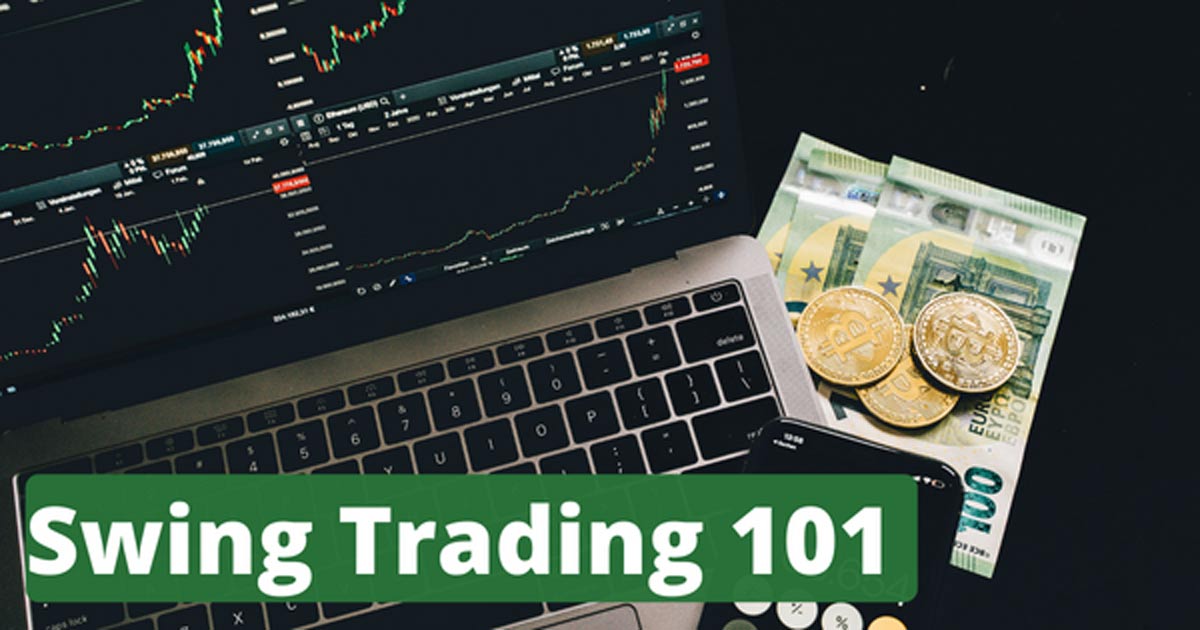Swing trading is one of the top recommendations by many experienced traders. Have you wondered why? This blog covers aspects like swing trading definition, tactics, pros and cons of swing trading, etc. Hopefully, you can find a satisfactory answer after reading it.
What Is Swing Trading?
Swing trading refers to a trading style that earns profits from short and medium time frames. Such a trade usually takes a few days or several weeks based on insights that swing traders take from technical analysis.
Swing traders have to suffer from overnight and weekend risks due to substantial price gaps between trading sessions. So, insights into market trends and patterns are crucial to avoid costly pitfalls.
Swing Trading Explained
What Do the “Swings” Represent in Swing Trading?
The upward and downward price movements of an asset create a swing. A trading style that earns profits from such swings is swing trading. The goal is to determine entry and exit points based on their intra-week or intra-month indication.
Uncovering the swing trading meaning can help you better understand its characteristics. As a result, you can develop much more effective strategies and tactics to gain favorable positions in the tumultuous market.
How Does Swing Trading Work?
Swing traders mostly benefit from the forecast of price movements. For example, if a trader believes that a stock will rise in the next few days or weeks, he/she will purchase the stock and sell it before the price drops. In case they expect the price freefall shortly, they will short the stock!
The evaluation of risk and reward guides swing traders through tough times. The principle is to stay within the risk you are willing to cover. Be careful with highly profitable swing trades as they go beyond your risk tolerance!
Benefits and Drawbacks of Swing Trading

You can consider swing trading as a short-term or medium-term trade type. Many swing traders trade based on a risk/reward. It means that they decide on trades based on price movements and their risk tolerance. So, the updates of price movements play an important role in the success of the trading strategy.
The technical analysis relates to the analysis of trading charts to get the right timing of market entries/exits. Optimal stop losses and minimal risks are obvious outcomes. Also, you can take insights from technical analysis as signals to pinpoint future price movements.
For example, they have shares at the price of $1 which shows the potential growth of $3. It is worth taking a risk when the risk/reward ratio is favorable. On the other hand, if you risk $1 per share while it only reaches $0.75 as a potential gain, the ratio of risk and reward shows the stop sign!
We have mentioned technical analysis rather than fundamental analysis for profitable swing trading. The reason is that this type of trading is a short and medium time-frame trade. Meanwhile, fundamental analysis is crucial for long-term investors who watch their trades for years.
Yet, the fundamental analysis still shows a supporting role in the enhancement of analysis accuracy. For instance, when a swing trader sees the rise of a stock, they might need to verify the intrinsic value of the stock through fundamental analysis.
Swing traders should get familiar with many types of charts, such as daily charts, and 1-hour or 15-minute charts. So, they can collect enough insights into the precise entries and stop losses for consistent profitability.
| Advantages | Disadvantages |
|
|
Swing Trading Tactics
The combination of multiple time-frame charts generates insights into various chart patterns. Common types include moving average crossovers, head and shoulders patterns, flags, triangles, cup-and-handle patterns, etc.
There are many techniques that swing traders apply for the recognition of reversals and market trends. Traders love to apply candlesticks to not only update the ups and downs of price action but also foresee the next market moves.
As a result, your trading plan can have increased accuracy thanks to detailed insights into trading patterns. Swing traders can take it as an edge to maintain the consistency of profitability.
Long story short, swing trading profits have a close correlation with updates of in-time price actions and market forecasts. The ultimate goal is to gain an optimal risk/reward ratio. We share the swing trading basics for beginners to confidently and profitably trade in the volatile market.
- Bull flag is a setup of trend pullback as a result of price action. It shows a conservative trading pattern with the best odds of continuation.
- Support or Resistance trades are to look for a profitable point to enter in the trend’s direction.
Why Is Risk Management Critical in Swing Trading?

Risk management is crucial for not only swing trading in particular but also all types of trading in general. Once you can manage trading risks, you have favorable positions or a trading edge.
For such short and medium-term trading as swing trading, abrupt reversals can happenearningke you lose all your money. Yet, effective risk management tactics can cut down losses while you open up to making money through trades in the market.
Day Trading vs. Swing Trading: What Are the Main Differences?
Swing trading and day trading are two main popular trading types. While swing trades are for short and medium time frames, day trading only focuses on short-term trades. Thus, day traders should be the masters of complex charting systems and technical analysis for timely scalps.
Meanwhile, swing traders can hold their positions for days, weeks, or even months. Insights they love to gain are the combination of technical and fundamental analysis.
The Bottom Line
Swing trading has its strong suits and weaknesses that can raise your income and simultaneously empty your accounts.
This blog focuses on the key aspects, such as its definition, tactics, advantages, disadvantages, etc. So, beginners can have an overview of swing trading and whether it is suitable for their starting point.
Stay tuned for our next articles in which we will deep dive into more trading topics!


